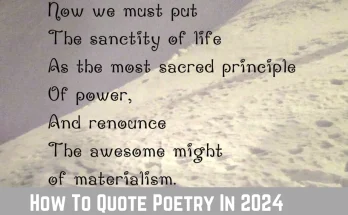In Critical Analysis of Arrival of the Monsoon, we will delve into the poem, examining its structure, imagery, themes, and the poet’s use of language.
“Arrival of the Monsoon” is a well-known poem by Taufiq Rafat, a Pakistani poet known for his vivid imagery and exploration of themes related to nature, culture, and human experiences. Taufiq Rafat is the founder of Pakistani Idiom.
Critical Analysis of Arrival of the Monsoon
Imagery and Sensory Perception:
Rafat’s “Arrival of the Monsoon” captivates readers with its rich imagery, immersing them in the sights, sounds, and sensations of the monsoon season.
The poet employs descriptive language to evoke a vivid sensory experience, enabling readers to visualize the rain, feel the wetness, and hear the soothing sound of rainfall. This imagery contributes to the overall atmosphere of the poem.
The Power of Nature:
One of the central themes in the poem is the power and significance of nature, particularly the monsoon. Rafat portrays the monsoon as a forceful and transformative presence.
The rain brings life to the barren landscape, rejuvenating it with its nourishing touch. The poem highlights the awe-inspiring nature of natural phenomena and emphasizes humanity’s connection to the larger natural world.
Symbolism and Renewal:
The arrival of the monsoon serves as a symbol of renewal and rejuvenation. The parched and arid land is contrasted with the transformative power of rain, symbolizing the potential for growth, change, and rebirth.
The poem explores the cyclical nature of life and draws parallels between the monsoon’s arrival and the cycles of human existence.
Cultural and Historical Significance:
Rafat weaves cultural and historical references into the poem, grounding it in a specific context. The monsoon holds deep cultural significance in South Asia, where it is celebrated and anticipated.
The poem touches upon the cultural rituals and traditions associated with the monsoon, providing insight into the region’s customs and values. This adds depth to the poem and invites readers to explore the intersection of nature and culture.
Contrast and Dichotomy:
Within the poem, there is a contrast between the harshness of the dry season and the relief brought by the monsoon rains. Rafat juxtaposes the arid landscape with the lushness and abundance that follows the rain.
This contrast highlights the transformative power of the monsoon and accentuates the impact it has on the environment and human life.
Language and Rhythm:
Rafat’s language and use of rhythm contribute to the overall effect of the poem. The poet employs evocative language, employing vivid and descriptive imagery to paint a vivid picture of the monsoon’s arrival.
Additionally, the rhythm of the poem reflects the natural cadence of rainfall, creating a melodic and immersive reading experience.
Conclusion:
Taufiq Rafat’s “Arrival of the Monsoon” is a captivating poem that explores the power of nature, the symbolism of renewal, and the cultural significance of the monsoon season.
Through vivid imagery, cultural references, and skillful use of language, Rafat transports readers to a world saturated with sensory experiences.
The poem invites contemplation on the cycles of life, the transformative nature of natural phenomena, and the interplay between nature and culture.



